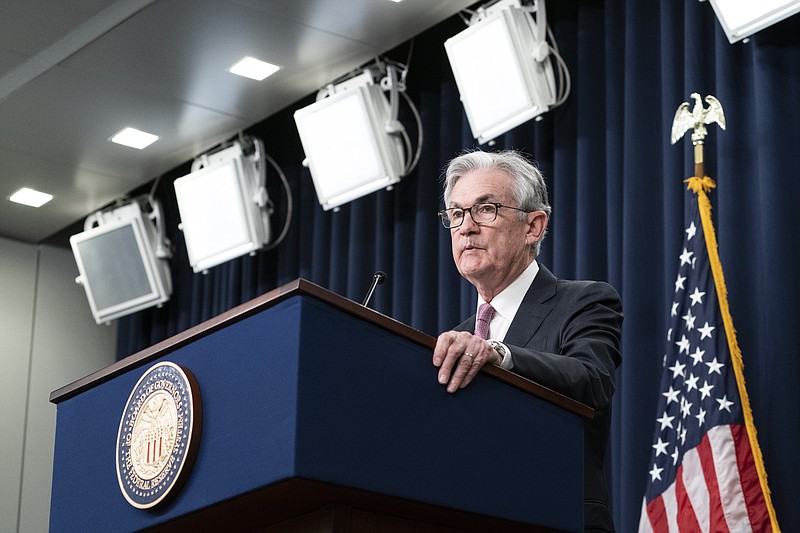WASHINGTON -- The Federal Reserve intensified its fight against the worst inflation in 40 years by raising its benchmark interest rate by a half-percentage point Wednesday -- its most aggressive move since 2000.
The increase in the Fed's key short-term rate raised it to a range of 0.75% to 1%, the highest point since the pandemic struck two years ago.
The Fed also said it will start reducing its huge $9 trillion balance sheet, made up mainly of Treasury and mortgage bonds. Reducing those holdings will have the effect of further raising borrowing costs throughout the economy.
Speaking at a news conference after the Fed's latest meeting, Chairman Jerome Powell took the unusual step of saying the central bank's officials understood the financial pain that high inflation is causing ordinary Americans. But Powell stressed that the Fed is sharply raising rates for that very reason -- to rein in high inflation, sustain the economy's health and ease the stress that millions of households are facing.
"Inflation is much too high," he said, "and we understand the hardship it is causing."
With prices for food, energy and consumer goods accelerating, the Fed's goal is to cool spending -- and economic growth -- by making it more expensive for individuals and businesses to borrow. The central bank hopes that higher costs for mortgages, credit cards and auto loans will slow spending enough to tame inflation yet not so much as to cause a recession.
It will be a delicate balancing act. The Fed has endured widespread criticism that it was too slow to start tightening credit, and many economists are skeptical that it can avoid causing a recession.
At his news conference, Powell said he was confident that the economy is resilient enough to withstand higher borrowing rates. Job openings are at a record high. There are two available jobs, on average, for each unemployed person. Wages are rising at a historically rapid pace, and businesses are continuing to invest in equipment and software.
"I see a strong economy," he said. "Nothing about it says it's close to or vulnerable to a recession."
Powell also made clear that additional rate increases are coming. He said half-point increases in the Fed's key rate "should be on the table in the next couple of meetings" in June and July.
But he also sought to downplay any speculation that the Fed might be considering a rate increase as high as three-quarters of a percentage point.
"A (three-quarters of a point) hike is not something that the committee is actively considering," he said -- a remark that caused stock indexes to jump. Before he spoke, the Dow Jones Industrial Average was up only modestly. By the close of trading, the Dow had soared 930 points, or 2.8% -- its best single-day gain since May 2020.
"Market observers over the last week were starting to think that a 75 basis point increase was a possibility, even though it was a remote," said Emily Bowersock Hill, chief executive officer of Bowersock Capital Partners, a financial management firm. The "euphoria" in the stock market Wednesday, Bowersock Hill said, also reflected the fact that the Fed didn't say anything that investors weren't already expecting.
In their statement, the central bank's policymakers noted that Russia's invasion of Ukraine is worsening inflation pressures by raising oil and food prices. It added that "covid-related lockdowns in China are likely to exacerbate supply chain disruptions," which could further boost prices.
Inflation, according to the Fed's preferred gauge, reached 6.6% last month, the highest in four decades. It has been accelerated by a combination of robust consumer spending, chronic supply bottlenecks and sharply higher gasoline and food prices.
Starting June 1, the Fed said it would allow up to $48 billion in bonds to mature without replacing them for three months, then shift to $95 billion by September. At September's pace, its balance sheet would shrink by about $1 trillion a year. The balance sheet more than doubled after the pandemic recession hit as the Fed bought trillions in bonds to try to hold down long-term borrowing rates.
At the news conference, Powell said the Fed wants to "expeditiously" raise its key rate to a level that neither stimulates nor restrains economic growth, which the Fed has said is about 2.4%. The central bank's policymakers have suggested that they will reach that point by year's end.
Once the rate reaches that level, Powell said that "if we do believe that it's appropriate" to raise their short-term rate further, to a level that would restrict growth, "we won't hesitate."
Economists warn that some of the factors fueling inflation -- notably, shortages of supplies and workers -- are outside the Fed's ability to solve.
"The Fed can't fix supply-side challenges with higher interest rates," said Jim Baird, chief investment officer at Plante Moran Financial Advisors. "Fed tightening doesn't re-open Chinese factories, increase grain shipments from Ukraine, re-position container ships to where they are needed or hire truckers to move goods."
Powell said, however, that he thinks the Fed can cool booming demand and thereby help slow inflation.
The Fed's credit tightening is already having some effect on the economy. Sales of existing homes sank 2.7% from February to March, reflecting a surge in mortgage rates related, in part, to the Fed's planned rate increases. The average rate on a 30-year mortgage has jumped 2 percentage points just since the start of the year, to 5.1%.
Powell has pointed to the widespread availability of jobs as evidence that the labor market is tight "to an unhealthy level" and that fuels inflation. The Fed chair is betting that higher rates can reduce those openings, which would presumably slow wage increases and ease inflationary pressures, without triggering mass layoffs.
For now, with hiring robust -- the economy has added at least 400,000 jobs for 11 straight months -- and employers grappling with labor shortages, wages are rising at a roughly 5% annual pace. Those pay raises are driving steady consumer spending despite spiking prices. In March, consumers increased their spending 0.2% even after adjusting for inflation.
Financial markets are pricing in a Fed rate as high as 3.6% by mid-2023, which would be the highest in 15 years. Shrinking the Fed's balance sheet will add another layer of uncertainty surrounding how much the Fed's actions may weaken the economy.
Complicating the Fed's task is a slowdown in global growth. Covid-19 lockdowns in China are threatening to cause a recession in the world's second-largest economy. And the European Union is facing higher energy prices and supply chain disruptions after Russia's invasion of Ukraine.
What's more, other central banks around the world are also raising rates, a trend that could further imperil global growth. Today, the Bank of England is expected to raise its key rate for the fourth straight time. The Reserve Bank of Australia increased its rate Tuesday for the first time in 11 years.
And the European Central Bank, which is grappling with slower growth than in the United States or the United Kingdom, may raise rates in July, economists expect.
For retirees and other savers, the Fed's rate increases mean they might see higher returns on certificates of deposits and savings accounts, which have been minuscule for years.
Today the average yield on a one-year CD is just 0.22%, according to Bankrate.com, and that's up from 0.14% at the start of the year.
Any increase in savings account interest rates will depend on where the money is parked.
Savings, certificates of deposit and money market accounts don't typically track the Fed's changes. Instead, banks tend to capitalize on a higher-rate environment to try to increase profits. They do so by imposing higher rates on borrowers, without necessarily offering juicier rates to savers.
This is particularly true for large banks now. They've been flooded with savings as a result of government financial aid and reduced spending by many wealthier Americans during the pandemic. They won't need to raise savings rates to attract more deposits or CD buyers.
But online banks and others with high-yield savings accounts could be an exception. These accounts are known for aggressively competing for depositors. The only catch is that they typically require significant deposits.
Investments in mutual funds or exchange-traded funds that hold long-term bonds will become a riskier. Typically, existing long-term bonds lose value as newer bonds are issued at higher yields.
Still, savers are starting to see some better potential returns from Treasurys. On Tuesday, the yield on the 10-year note was 2.96%, after having briefly topped 3% for the first time since 2018.
Financial markets expect inflation to average 2.83% over 10 years. That level would give investors a positive, if very small, return of about 0.13%.
"All of a sudden, we end up in this position where fixed income is way more competitive than it was before," said Jason Pride, managing director for Glenmede, a wealth management firm.
Information for this article was contributed by Christopher Rugaber and Paul Wiseman of The Associated Press, Jeanna Smialek of The New York Times and Don Lee of the Los Angeles Times (TNS).
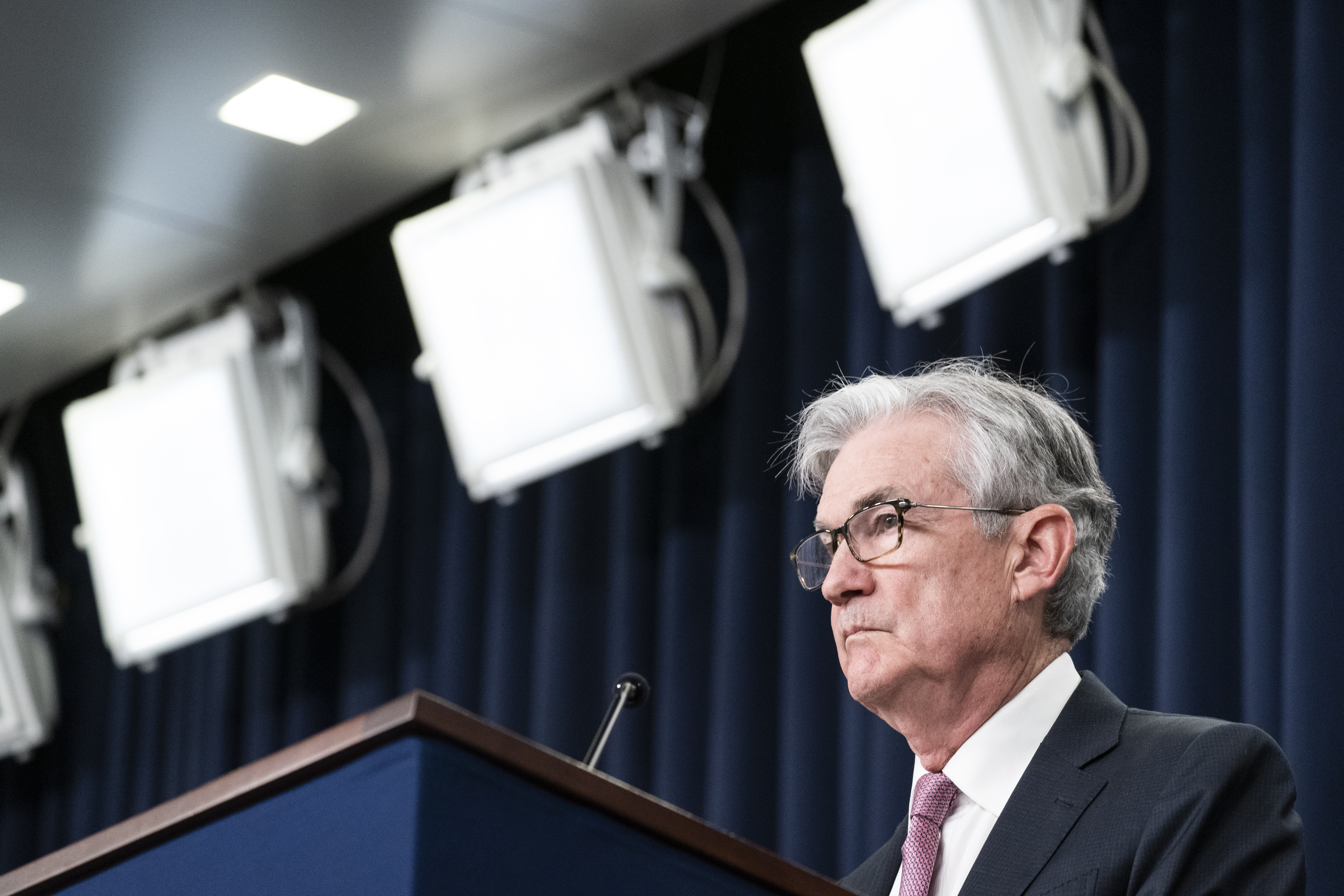 Federal Reserve Board Chair Jerome Powell speaks during a news conference at the Federal Reserve, Wednesday, May 4, 2022 in Washington. The Federal Reserve intensified its drive to curb the worst inflation in 40 years by raising its benchmark short-term interest rate by an sizable half-percentage point. (AP Photo/Alex Brandon)
Federal Reserve Board Chair Jerome Powell speaks during a news conference at the Federal Reserve, Wednesday, May 4, 2022 in Washington. The Federal Reserve intensified its drive to curb the worst inflation in 40 years by raising its benchmark short-term interest rate by an sizable half-percentage point. (AP Photo/Alex Brandon)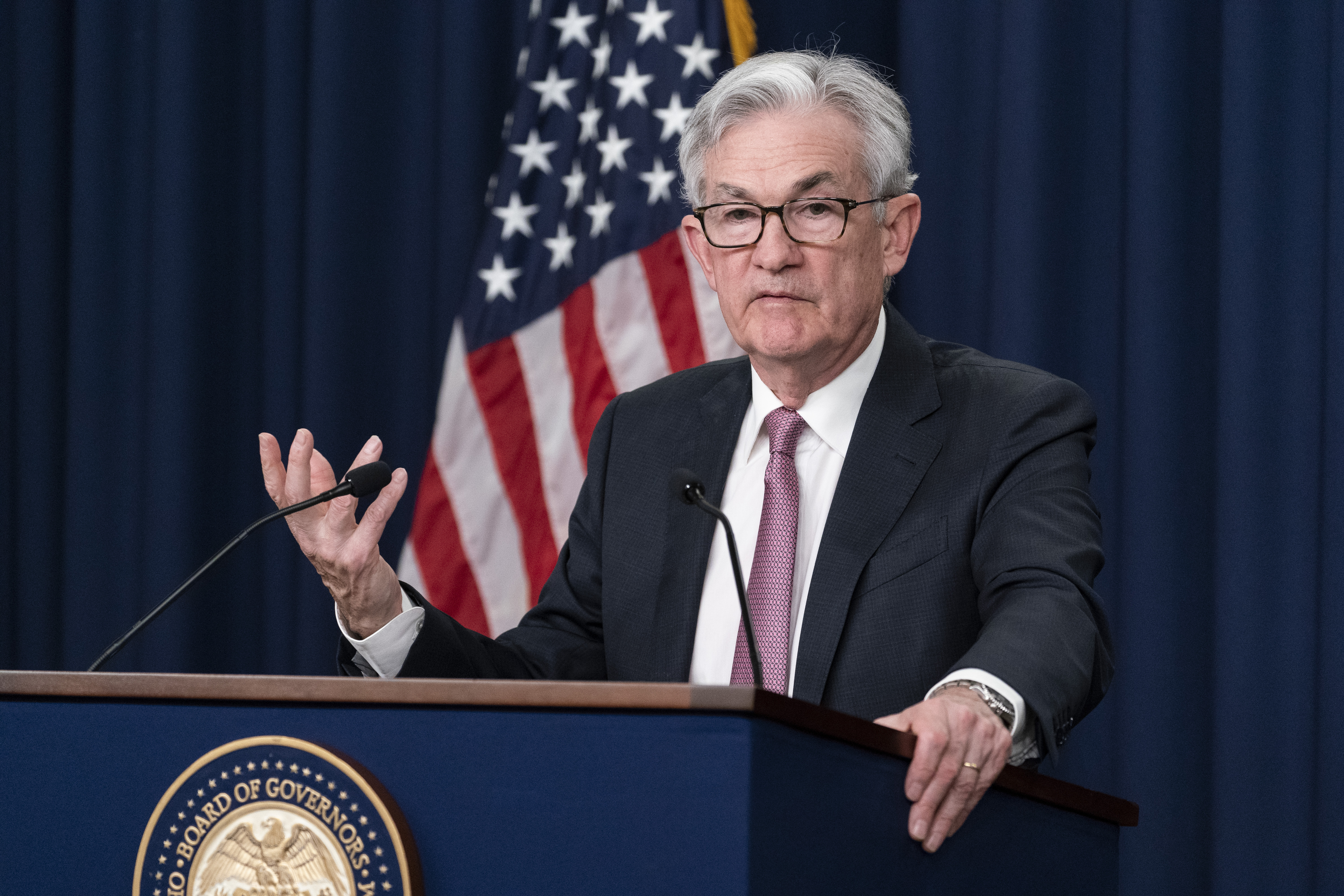 Federal Reserve Board Chair Jerome Powell speaks during a news conference at the Federal Reserve, Wednesday, May 4, 2022 in Washington. The Federal Reserve intensified its drive to curb the worst inflation in 40 years by raising its benchmark short-term interest rate by an sizable half-percentage point. (AP Photo/Alex Brandon)
Federal Reserve Board Chair Jerome Powell speaks during a news conference at the Federal Reserve, Wednesday, May 4, 2022 in Washington. The Federal Reserve intensified its drive to curb the worst inflation in 40 years by raising its benchmark short-term interest rate by an sizable half-percentage point. (AP Photo/Alex Brandon)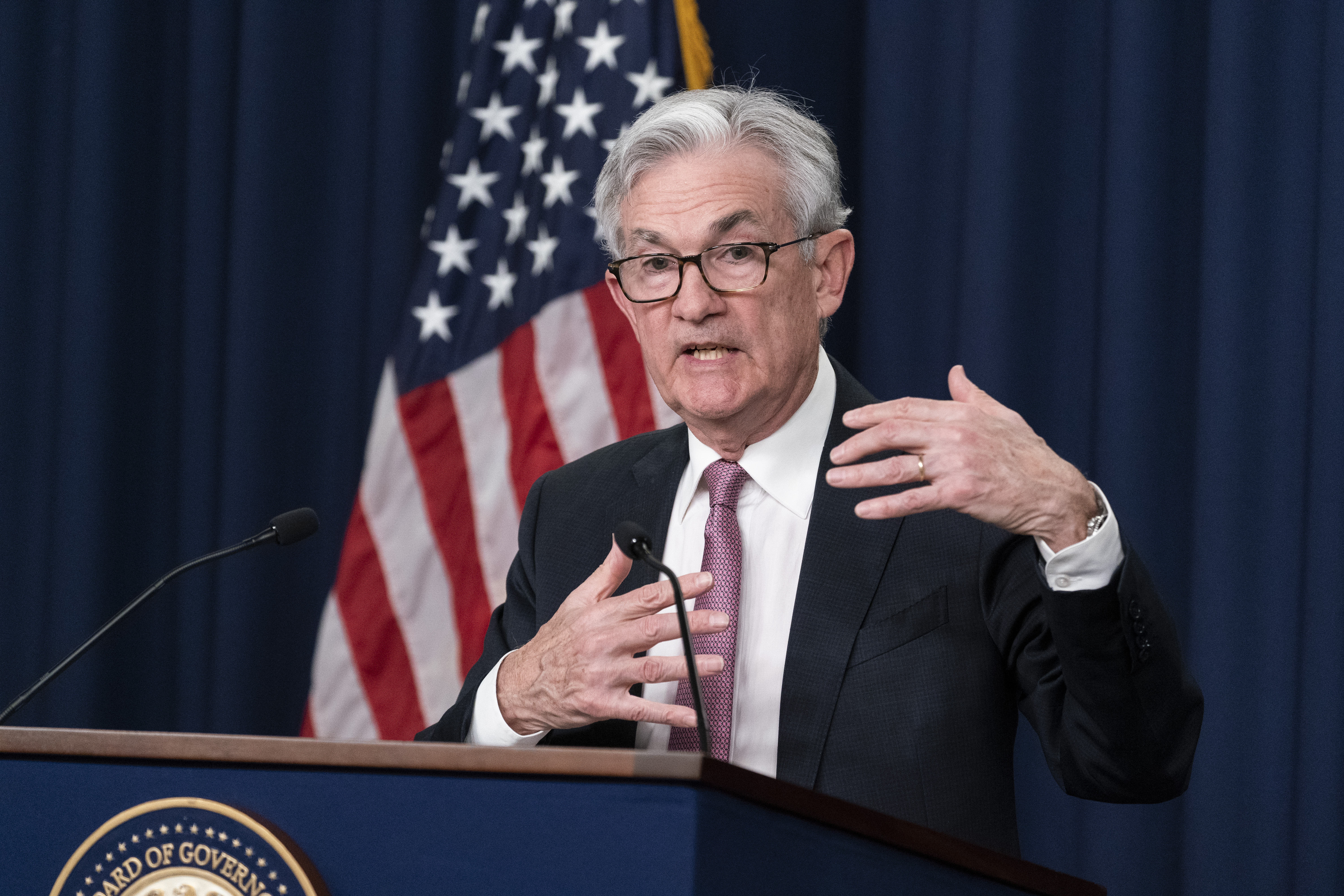 Federal Reserve Board Chair Jerome Powell speaks during a news conference at the Federal Reserve, Wednesday, May 4, 2022 in Washington. The Federal Reserve intensified its drive to curb the worst inflation in 40 years by raising its benchmark short-term interest rate by an sizable half-percentage point. (AP Photo/Alex Brandon)
Federal Reserve Board Chair Jerome Powell speaks during a news conference at the Federal Reserve, Wednesday, May 4, 2022 in Washington. The Federal Reserve intensified its drive to curb the worst inflation in 40 years by raising its benchmark short-term interest rate by an sizable half-percentage point. (AP Photo/Alex Brandon)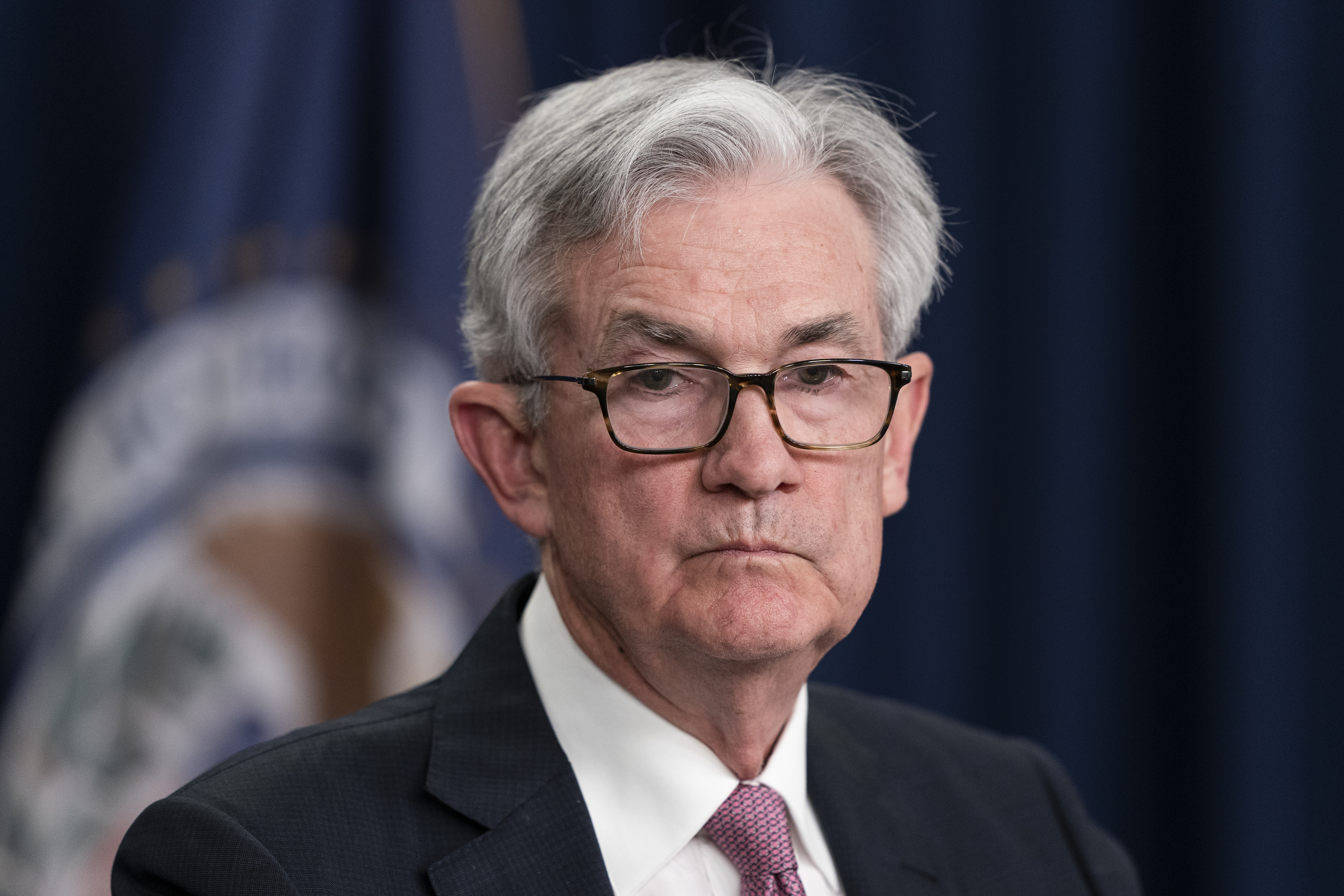 Federal Reserve Board Chair Jerome Powell pauses while speaking during a news conference at the Federal Reserve, Wednesday, May 4, 2022 in Washington. The Federal Reserve intensified its drive to curb the worst inflation in 40 years by raising its benchmark short-term interest rate by an sizable half-percentage point. (AP Photo/Alex Brandon)
Federal Reserve Board Chair Jerome Powell pauses while speaking during a news conference at the Federal Reserve, Wednesday, May 4, 2022 in Washington. The Federal Reserve intensified its drive to curb the worst inflation in 40 years by raising its benchmark short-term interest rate by an sizable half-percentage point. (AP Photo/Alex Brandon)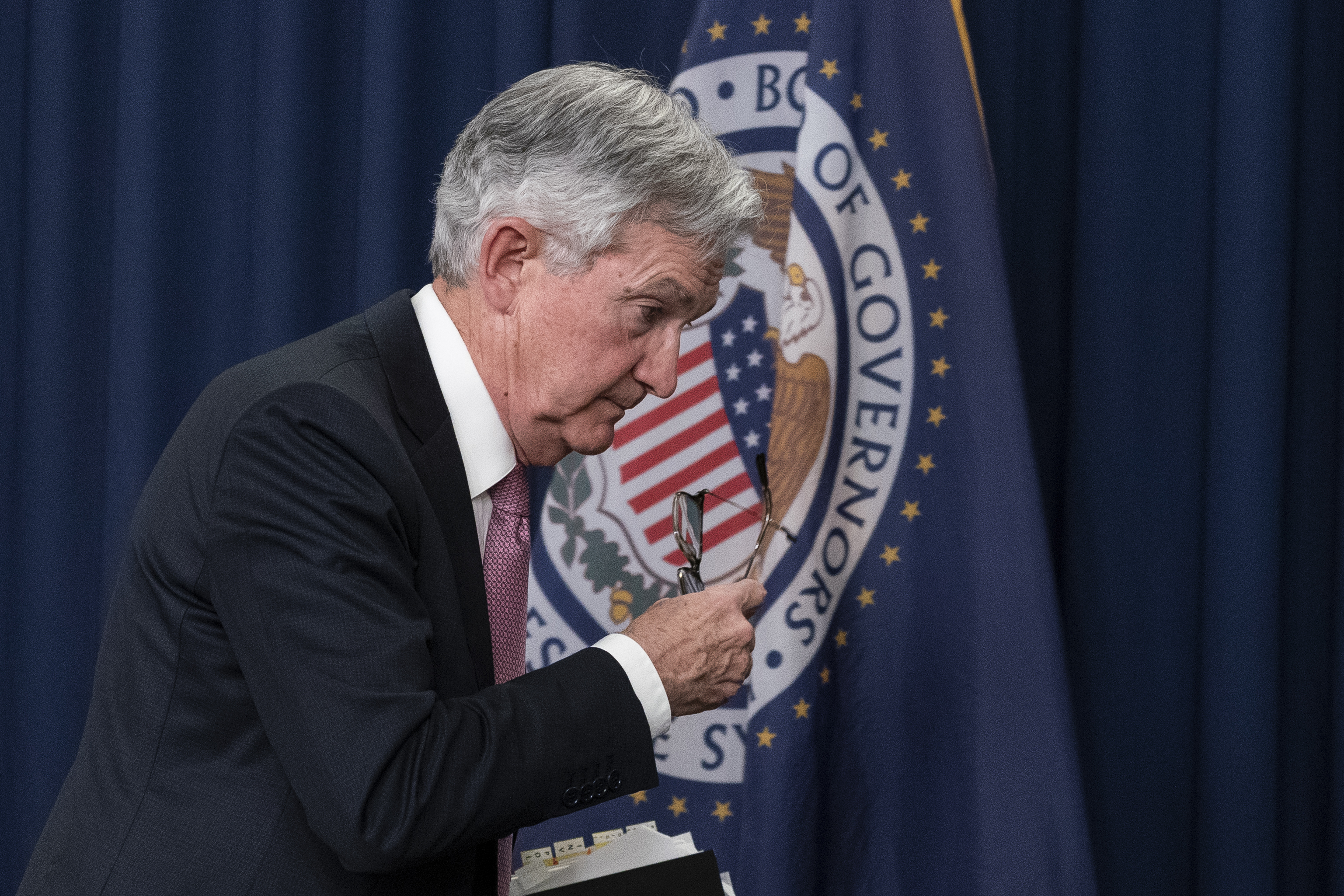 Federal Reserve Board Chair Jerome Powell departs after a news conference at the Federal Reserve, Wednesday, May 4, 2022 in Washington. The Federal Reserve intensified its drive to curb the worst inflation in 40 years by raising its benchmark short-term interest rate by an sizable half-percentage point. (AP Photo/Alex Brandon)
Federal Reserve Board Chair Jerome Powell departs after a news conference at the Federal Reserve, Wednesday, May 4, 2022 in Washington. The Federal Reserve intensified its drive to curb the worst inflation in 40 years by raising its benchmark short-term interest rate by an sizable half-percentage point. (AP Photo/Alex Brandon)
